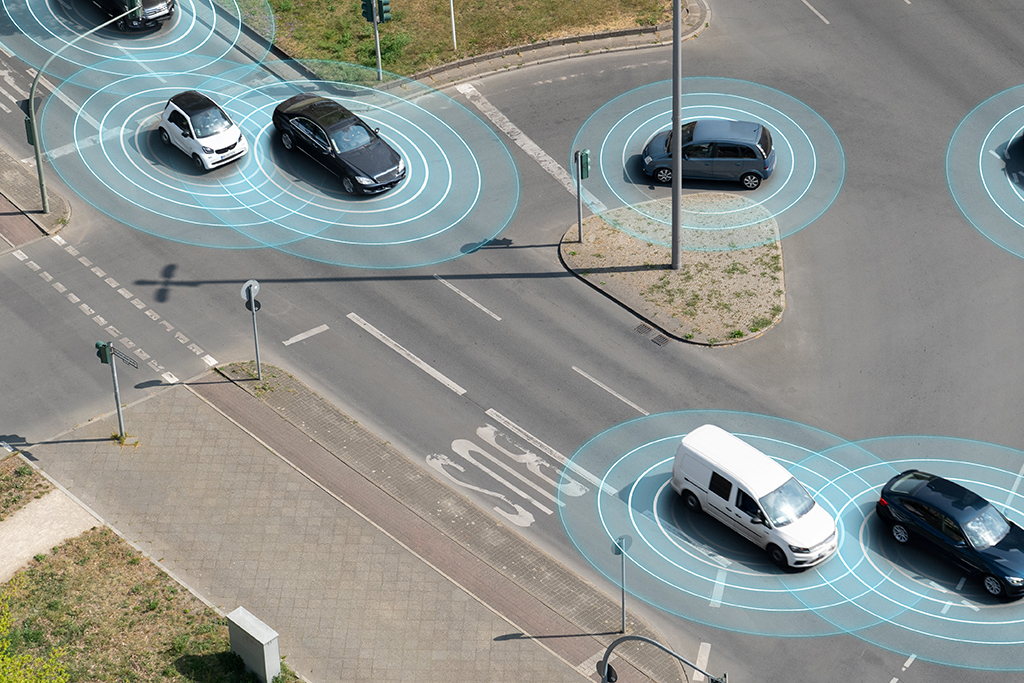In the Innovation Race, Automotive Makers Must Embrace Wireless Test Integration
By Adam Smith
July 8, 2025Wireless connectivity has become a pillar of modern vehicle design. But as OEMs and Tier 1 suppliers integrate more consumer-grade wireless technology into their vehicle platforms, they are faced with the same set of challenges confronting many electronics producers: how to create and manage efficient, repeatable, scalable and cost-effective testing procedures from the early stages of R&D through high-volume manufacturing.
The primary focus of automotive design teams is to enable innovation. However, without adequate test protocols at key points along the design chain, test engineering runs the risk of lagging behind, which can affect product quality, time to market and the user experience.
Wireless Connectivity Is in the DNA of Automotive Design
As a mainstay for enhancing safety, convenience and the overall driving experience, the most prevalent wireless connectivity technologies include Bluetooth®, Wi-Fi and cellular networks that enable functions like hands-free calling, real-time navigation, over-the-air (OTA) software updates and remote diagnostics. These advancements have transformed vehicles into connected hubs, meeting consumer expectations for seamless digital integration.

The global market for automotive connectivity is projected to grow from $33.4 billion in 2024 to $190.3 billion by 2033, with a compound annual growth rate of 19 percent. This growth underscores the increasing demand for vehicles equipped with advanced connectivity features.
Looking ahead, wireless connectivity is poised to enable more sophisticated applications in future vehicle models. These include support for autonomous driving technologies as well as vehicle-to-everything (V2X) communication, which allows cars to interact with each other and with infrastructure to improve traffic flow and safety. As these innovations become more prevalent, the role of robust and reliable in-vehicle wireless connectivity will only become more critical.
In-Vehicle Wireless Design: A Fragmented Ecosystem
Within the automotive design ecosystem, the different subsystems in the car will have different needs. The requirements for secure keyless entry are not the same as infotainment or embedded telematic control units (TCUs) that wirelessly connects the vehicle to the cloud.
Different wireless applications exist on their own using different technologies for connectivity, each with unique test needs. The consequence is clear: a one-size-fits-all approach to automotive testing is fraught with risk due to the number and diversity of wireless integration vectors.
Wireless Weaves a Tapestry of Innovation
Wireless technologies like Wi-Fi, Bluetooth and cellular networks were initially developed for consumer applications — smartphones, laptops, smart home devices — where rapid innovation, large production volumes and price competition have driven fast iteration and falling costs. When these same technologies are integrated into vehicles, the test and deployment landscape changes dramatically.

Automotive environments are far more demanding. OEMs in this space are risk-averse and often late adopters of new technologies, prioritizing safety, security and long-term reliability over cutting-edge features. Unlike consumer devices, which may be replaced every two to three years, automotive systems must function flawlessly over much longer product lifecycles and under harsher operating conditions. This means more rigorous test requirements — especially in RF performance, environmental durability and functional safety.
Let’s look at the key points and test challenges for several of the most important technologies:
- Wi-Fi is widely used in vehicles for infotainment systems, enabling media streaming, OTA updates and real-time diagnostics. In-vehicle Wi-Fi testing poses unique challenges. Dense RF environments filled with Bluetooth, cellular and even radar signals can cause interference. Coexistence testing is critical to ensure robust, uninterrupted connectivity. With Wi-Fi 7 introducing technologies like 4096-QAM and Multi-Link Operation, the test complexity increases further due to tighter Error Vector Magnitude (EVM) requirements and the need to validate operation across multiple frequency bands.
- Bluetooth has evolved from a convenience feature to a core connectivity technology for hands-free calling and voice control, in-cabin device syncing and tire pressure monitoring systems (TPMS). New capabilities like Bluetooth channel sounding enhance secure access by precisely measuring proximity, which is crucial for digital keys and anti-theft systems. But testing Bluetooth in automotive applications demands attention to low-latency performance, interoperability with various mobile devices, and challenging antenna design constraints exacerbated by the vehicle’s limited space.
- Digital keyless entry often combines ultrawideband (UWB), Bluetooth and near field communication (NFC) to enable secure, seamless vehicle access. Testing must account for complex factors like precise location accuracy (to avoid relay attacks), secure cryptographic protocols and sensitivity to physical placement and interference. NFC’s short range makes testing particularly sensitive to repeatability and precision in real-world conditions.
- Cellular connectivity via 4G, and increasingly 5G, is the backbone for telematics, emergency services and vehicle-to-cloud functions. Automotive test strategies must account for whether connected modules are pre-certified or chip-on-board, with the latter requiring significantly more complex and expensive RF validation.

Overall, while consumer adoption helps reduce the cost of wireless components, automotive applications demand far more robust and specialized test strategies to meet the industry’s stringent requirements for safety, reliability and performance.
Why Car Makers Need a Wireless Test Partner
Unlike the consumer electronics industry, cost-sensitive and risk-averse automotive manufacturers are slower to invest in leading-edge wireless testbeds. As a result, some OEMs and Tier 1 suppliers rely on outdated methods due to limited internal RF test knowledge.
To close the gap, a wireless test partner such as LitePoint can simplify wireless test for labs and factories and provide the capability to test the latest wireless products with innovative test methodologies.
As a trusted wireless test company, LitePoint provides high-quality, efficient and reliable test solutions. LitePoint is also the only test company to cover all three critical technologies in the Car Connected Consortium (CCC) digital key 3.0 specification – UWB, Bluetooth and NFC.
Driving Performance with Trusted Test Partnerships
As vehicles incorporate more software-defined technologies, wireless testing is no longer optional; it’s a strategic imperative.
With turnkey systems for both R&D and high-volume production, LitePoint enables automotive customers to implement scalable test processes that align with design complexity and compliance requirements. LitePoint brings deep domain expertise, strong chipset vendor relationships and leading-edge test automation. By standardizing and simplifying wireless test across design and production workflows, LitePoint helps automotive manufacturers close the gap between wireless ambition and real-world performance.
Connected vehicles require wireless systems that just work. LitePoint helps ensure they do.
Categories
Subscribe to the LitePoint Blog
Related Posts
The Future of Automotive Connectivity and Communication Test Solutions
August 18, 2022
Wireless System Testing Enhances Automotive Connectivity
June 11, 2024


